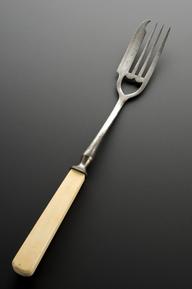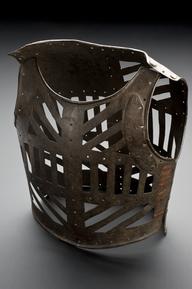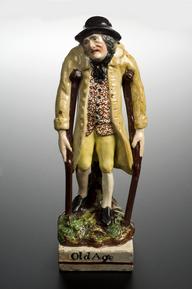

'Alclad' artificial left leg, London, England, 1924-1940




Light metal left "Alclad" above knee prosthesis, with metal shin (strip riveted back and front), Central knee control mechanism and with a standard foot, ankle and toe joints. Original catalogue suggests made by Hanger in 1924, but leg is stamped 1940. Weight: 5 lbs, 2.2 kg.
This prosthesis was originally catalogued as being made for an individual who had their left leg amputated above the knee as a result of their service during the First World War (1914-1918). But with the numbers ‘1940’ stamped into it, it is now believe to date from the Second World War (1939-1945). Made predominantly from corrosion resistant aluminium, known as ‘alclad’, it also has rubber foot and leather strapping to keep the leg in place. There is flexibility at the knee, ankle, foot and toe joints.
It was made by Hanger, an American company founded by James Edward Hanger, one of the first soldiers to undergo an amputation during the American Civil War (1861-1865). Hanger began to design his own prosthetic limbs and founded the company that still exists today. During the early stages of the First World War, the existing British system of limb provision for military amputees was quickly overwhelmed and companies such as Hanger were invited over to help. They set up workshops in the grounds of Queen Mary’s Hospital, Roehampton which from 1915 became the UK’s main centre for limb-making and limb-fitting and remained so during the Second World War.
Details
- Category:
- Orthopaedics
- Object Number:
- 1999-451
- Measurements:
-
overall (fully extended): 930 mm x 320 mm x 186 mm, 2.2 kg
- type:
- artificial leg
- credit:
- Richmond Twickenham and Roehampton Healthcare NHS Trust




